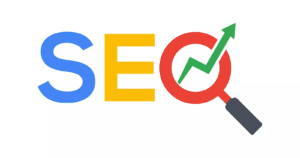Gutters are an often-overlooked part of a house that contributes to its health and longevity. They help direct rainwater away from the foundation and prevent soil erosion that can lead to unstable foundations. Contact Gutter Installation Murfreesboro TN for professional help.

Effective gutter systems also reduce the risk of basement flooding and mold growth, protecting stored belongings and improving the home’s overall appearance and lifespan.
Gutters help shed rainwater from the roof, keeping foundations, landscaping and structures safe from flooding, damage and rot. But they also play a crucial role when snow thaws and melts, directing water away from the building and minimizing the potential for damage. And because gutters are so important to your home’s function as a whole, ensuring they are properly installed is an imperative task.
Gutter installation is a complicated process, requiring precise measurements and specialized tools to achieve ideal results. It’s also a dangerous job that involves working at heights, increasing the risk for personal injury. If your risk tolerance is low or you’re not comfortable with ladders and raised work environments, it’s best to leave this type of exterior remodeling to the professionals.
The benefits of professional gutter installation extend far beyond initial cost savings. Expert craftsmanship ensures compliance with local building codes, guaranteeing a functional gutter system that safeguards your house’s structure and foundation. Plus, contractors complete projects more efficiently, delivering superior results with a fraction of the time required for DIY methods.
DIY enthusiasts often overlook significant factors during gutter replacement. For instance, if the gutter pitch is too steep, downspouts will overflow and cause leaks and water damage to structures and property. Experienced contractors take these and other issues into consideration during every project.
It’s also critical to ensure seams and connections are sealed tightly. Whether you’re assembling sections of the gutter or connecting downspouts to the gutter, proper sealing prevents future leaks and rotting. To create a waterproof seal, make sure the gutter sealant you choose has an additive to increase its adhesiveness and bonding strength.
Hire a Pro
Gutters serve a crucial role in the structure of your home. They help shed rainwater, protect your roof and walls from damage, and keep your landscaping safe from water pooling and flooding. So, while gutters may seem like a small detail, they’re not something you can afford to ignore. This is why it is best to hire a professional. They have the skills and expertise to ensure that your gutter system is installed correctly, preventing potential future problems from occurring.
Gutter installation is a complex job that requires careful planning and precise execution. A single mistake can leave your Owensboro, KY, house vulnerable to moisture damage and costly repairs.
Hiring a professional for gutter installation will help you avoid many of the common mistakes that homeowners make when trying to install gutters themselves. For example, one of the most common errors is installing gutters that are too large for your roof or home. This can lead to overflow and even leaks. A pro will check the size of your roof, the amount of rainfall in your area, and other factors before determining the ideal gutter size for your home.
Other common errors include improper downspout placement and inadequate drainage systems. Downspouts need to be positioned to direct the flow of water away from your foundation and basement to prevent water pooling around the house. You may also need to consider installing splash blocks or underground drainage systems to further separate water from your home’s foundation.
Another mistake is incorrect mounting or attachment of your gutters. If your gutters aren’t properly attached to the fascia board, they can easily become detached from the house during heavy storms and cause leaks or mold growth. The gutters must be secured with hangers, brackets, and screws to ensure that they stay in place and are free of debris.
The biggest benefit of hiring a professional for gutter installation is that they can spot problems that you might miss. For instance, a professional will check the condition of the fascia board, ensuring that it is strong and secure enough to support the weight of the gutters. Additionally, they will ensure that the gutters are installed at a slight slope toward the downspouts for optimal drainage.
Consider Your Gutters’ Specific Needs
Gutters are not a one-size-fits-all solution for every home. They need to be accurately measured and customized onsite for an efficient and long-lasting system. A qualified roofing contractor will consider the roof’s surface area and the area’s rainfall patterns when choosing the right gutter size and design, ensuring that it can adequately handle rainwater while protecting your home from water damage.
Another factor to consider is the type of material. Gutters are available in a variety of materials, including aluminum, copper, steel, and vinyl, each with its own benefits. Your roofing contractor can help you decide which option is best for your Owensboro, KY, home and budget.
Once the materials have been chosen, your roofing contractor will begin to cut and prepare them for installation. This is a critical step because mismeasured or poorly-installed gutters can result in leaks and other problems. Once the gutters are ready, they’ll be attached to the fascia board using hangers or brackets and then positioned with a slight slope toward downspouts. Downspouts should be positioned a few feet away from the foundation to prevent water from pooling around the house’s foundation and causing structural damage.
Gutter guards are also an important addition to any gutter system. These covers can reduce the frequency of cleanings and prevent clogs by blocking leaves and other debris. In addition, they’ll help to keep your gutters rust-free and looking new.
Gutters protect your roof from water damage, keeping it safe and dry for years to come. They can also prevent wood rot, mold growth, and stains by effectively channeling rainwater away from the building. And finally, gutters can prevent soil erosion around the foundation of your home, which could lead to instability over time. Gutters are a valuable investment for any homeowner, and with proper maintenance they can last a lifetime. Regular inspections and timely repairs can extend their lifespan and minimize costly issues. So, if your gutters are nearing the end of their lifespan or you’re experiencing signs of failure, don’t wait to call the experts at First Star Exteriors.
Make the Right Choice
Gutters keep water away from a home, protecting it from foundation damage, soil erosion and other costly issues. However, there’s more to gutter installation than simply attaching troughs to the edge of the roof. The proper selection and installation of gutters requires an understanding of how your particular home’s design and climate affect the system, along with precise measurements and careful attention to detail.
For many homeowners, the choice to DIY or hire a professional depends on their skill level, time and budget. But if you’re comfortable working on ladders and are willing to devote the energy required, doing it yourself can be a rewarding project that saves you money. Just be honest with yourself about your abilities – this is one of the projects where an error can cost you dearly.
The traditional gutter system uses sections joined together in a sequence around the perimeter of the roof. This arrangement creates seams where leaks can develop and also introduces an area where leaves and debris can clog the gutter.
A better option is a seamless gutter system. These are manufactured from the material of your choice to your home’s exact dimensions, with no joints or seams. Seamless gutters are more expensive than sectional systems but are less prone to leaking and easier to maintain.
Another consideration when choosing a gutter system is which profile best complements your house and the surrounding landscape. Gutter systems come in different shapes and materials to suit a variety of homes, from the classic half-round style that’s popular with historic properties to modern K-style gutters.
Finally, the pitch of your roof determines the direction rainwater will flow off your roof and into downspouts. A steep enough pitch will ensure that rainwater flows freely from your gutters, keeping your system functional and preventing clogs.
A properly functioning gutter system can help prevent costly problems like leaks, mold and mildew, and unwanted plant growth by directing rainwater from the roof to downspouts and away from the home. If you’re ready to reap the benefits of a quality gutter system, consider hiring a professional specializing in gutter and downspout installation. This way, you can be confident that the job is done correctly the first time around and protect your home’s structure and foundation.








